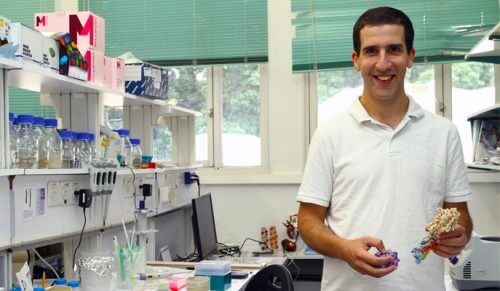
The cell membrane (membrane) is the boundary line, the fence, or the wall that distinguishes between "inside" and "outside" - between what happens inside the living cell and the outside world. It is a very thin layer, so thin that it can be compared to the wall of a soap bubble: if you try to isolate it, it may burst. The cell membrane contains, among other things, proteins, some of which function as gates, through which materials and signals pass on their journey from the outside world into the cell, and from the cell - out. About 30% of the proteins in the human body are membrane proteins, and most drugs, including drugs designed to treat cancer, target these proteins.
in research which was recently published in the scientific journal eLife Created Dr. Sheral Fleishman And research students Assaf Elazar and Yonatan Weinstein, in collaboration with Prof. Eitan Bibi and research student Ido Biran, all from the Department of Biomolecular Sciences at the Weizmann Institute of Science, a new method for studying the interactions between proteins and the cell membrane. They focused on the building blocks that make up the proteins - the amino acids - and managed to show what is the strategy that allows the proteins to ensure the proper functioning of the cell membrane.
The cell membrane consists of two layers of molecules, one side of which "loves water", while the other side "hates water". Due to this structure, these molecules create, together, a surface characterized by a negative electric charge in the part facing the interior of the cell. At the beginning of the research, the members of Dr. Fleishman's group aimed to understand how the cell membrane proteins relate to each other within the membrane. They used a natural protein, and created hundreds of versions of it - each of which differed from the original protein by only one amino acid. The scientists merged these genes with a gene that codes for a protein that creates resistance to antibiotics, and injected the product into bacteria in culture. When the bacteria came into contact with antibiotics, the overexpressed proteins gave the bacteria better protection.
After tracing the level of expression of the hundreds of mutant versions of the protein, the members of the research group realized that they have a kind of road map in front of them, which shows that the degree of effectiveness of the mutant protein found in the cell membrane depends on the exact position of each amino acid in the protein chain. To their surprise, the detailed data they discovered about the relationship between the protein and the cell membrane confirmed certain theories related to the composition of the cell membrane. Thus, for example, they identified the amino acids, which carry a positive electrical charge, which are usually found in the part of the membrane that faces the inside of the cell, even though it has a negative electrical charge. The scientists even identified amino acids with a neutral charge, which may be found in the central, fattier areas of the membrane.

"Through a combination of chemical and biological research methods," says Dr. Fleishman, "we were able to produce accurate data, which outline some of the basic laws for building proteins in the cell membrane. The data we have collected resolves some of the disagreements regarding the nature of biological membranes."
Dr. Fleishman's research group focuses on the creation of artificial proteins using computer algorithms, and the new laws they revealed in this research will help them design new protein structures, which can function in a variety of roles, including in cell membranes. The scientists hope that these laws will help, in the future, in the design of drugs that will target the receptors located in the cell membranes.
